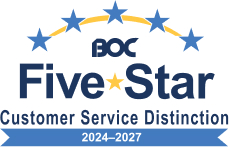 Living with chronic pain is no small feat—it can affect everything from your daily routines to your sense of well-being. But while chronic pain may be a part of life, it doesn’t have to control it. There are practical, easy-to-use tools and techniques you can use right at home to help manage pain and increase comfort. Let’s dive into some tried-and-true methods that can help you find relief and focus on the things that bring you joy.
Living with chronic pain is no small feat—it can affect everything from your daily routines to your sense of well-being. But while chronic pain may be a part of life, it doesn’t have to control it. There are practical, easy-to-use tools and techniques you can use right at home to help manage pain and increase comfort. Let’s dive into some tried-and-true methods that can help you find relief and focus on the things that bring you joy.
Different types of pain respond to different treatments, so it’s helpful to understand what kind of pain you’re dealing with to choose the most effective approach:
Arthritis: Arthritis causes joint stiffness and soreness, making movement difficult, especially in the morning. Heat therapy and gentle movement are especially effective for this type of pain.
Neuropathy: Often described as tingling, numbness, or a burning sensation, neuropathy affects nerves, typically in hands and feet. It can be frustratingly unpredictable, but there are ways to soothe it.
Back and Muscle Pain: This common type of pain comes from years of use, lifting, and bending. Back pain can range from mild discomfort to severe aches, making it tough to find a comfortable position.
By understanding the type of pain you’re experiencing, you can select tools and techniques that target your specific needs.
When it comes to pain relief, sometimes the simplest tools can have the biggest impact. Here are some effective pain management tools you can use right at home:
Heating Pads and Cold Packs: Heat is fantastic for relaxing tight, sore muscles, while cold packs work wonders on inflammation. Quick Tip: Use a heating pad in the morning to loosen up stiff joints, and try a cold pack after activity if swelling increases. Alternating between the two can also be highly effective for certain types of pain.
TENS Units: TENS (Transcutaneous Electrical Nerve Stimulation) units are small devices that deliver gentle electrical pulses to block pain signals and stimulate endorphin release. Pros: They’re portable and effective for a variety of pain types. Cons: TENS units may take a little practice to find the right intensity level, so start low and work up to a comfortable setting.
Massage Tools: Massage tools come in various forms, from handheld to electronic massagers, and are excellent for relieving muscle tension. You can use them for a quick neck massage in the morning or a back massage after a long day. Massagers are particularly helpful for improving circulation and easing tight muscles.
With these tools, you can build a personal pain relief toolkit that’s accessible anytime, helping you to feel more comfortable and in control.
Beyond tools, there are techniques you can incorporate into your day to help manage pain naturally and effectively:
Gentle Stretching and Exercise: Staying active, even with chronic pain, is key. Gentle stretches or light exercises like shoulder rolls or ankle circles keep muscles flexible and reduce stiffness. Start with just a few minutes a day and gradually increase as your body feels ready.
Mindfulness and Breathing Exercises: Pain can be mentally exhausting, and that stress can increase the sensation of pain. Practicing mindfulness and breathing exercises can help you manage pain perception. Take slow, deep breaths, focusing on each inhale and exhale, which can help calm your nervous system and reduce pain’s hold on your attention.
Posture Adjustments: Poor posture can worsen pain, especially in the back and neck. Pay attention to your posture throughout the day—whether you’re sitting, standing, or lying down. Quick Tip: Practice gentle shoulder rolls and keep your back straight to relieve pressure on your spine.
These techniques, practiced consistently, can become a powerful part of your pain management routine.
Consistency is essential in pain management. Establishing a routine helps you approach your pain with a plan and a sense of control.
Consistency and Timing: Try to use your tools and techniques at the same time each day. For instance, start each morning with a heat pack on your back or gentle stretches before bed. Routines create consistency, which can make pain management feel like a natural part of your day.
Using Pain Journals: Keeping a pain journal helps track what works and what doesn’t. Note when your pain is most intense and what techniques provided the most relief. Over time, you’ll see patterns that allow you to fine-tune your approach to pain management.
Consulting Healthcare Providers: If pain persists or changes, keeping your doctor informed is essential. They can offer guidance, suggest new techniques, or adjust your plan to better fit your needs. Pain management works best as a team effort, so don’t hesitate to reach out for support!
Creating a routine can give you a sense of control over your pain, helping you focus on comfort and stability.
Living with chronic pain may be a challenge, but managing it doesn’t have to be. By using a mix of simple tools, effective techniques, and a consistent routine, you can take control of your pain and improve your quality of life. It might take some experimenting to find what works best for you, but remember—you deserve comfort and relief.
Need more ideas for managing chronic pain? Our team is here to help! Whether you’re looking for advice on the best pain-relief tools or need guidance on building a personalized routine, reach out to us for support. Contact us—we’re here to support you in finding relief and living a more comfortable life.

